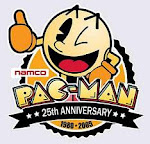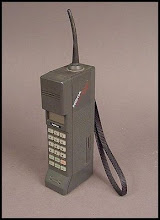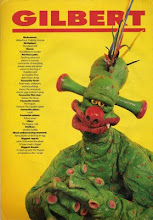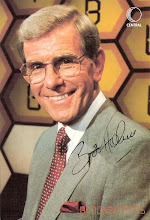 Bűvös Kocka - Magic Cube.
Bűvös Kocka - Magic Cube.Erno Rubik, a lecturer in the Department of Interior Design at the Academy of Applied Arts and Crafts in Budapest, Hungary, was passionately interested in geometry - the study of 3D forms - in construction and in exploring the hidden possibilities of combinations of forms and material in theory and in practice.
Rubik’s favourite teaching method was to communicate his ideas using models, made from paper, cardboard, wood or plastic, challenging his students to experiment by manipulating clearly constructed and easily interpreted forms. It was the realisation that even the simplest elements, cleverly duplicated and manipulated, yielded an abundance of multiple forms that would eventually lead to the Rubik's Cube.
Rubik set out to create a three dimensional object, of high aesthetic value, which was not only richer in configuration variations and more of a mental challenge than any puzzle in existence, but would also continue to be one, self-contained whole, throughout its manifold transformations.
This objective at first seemed absolutely impossible. After conceiving the idea of the 3x3x3 Cube, Rubik first tried to hold together the elements of a simpler, 2x2x2 cube, by means of an elastic rubber construction that threaded its way through all 8 elements. But he simply could not get the device to work.
Inspiration struck on a sunny summer day in 1974 as Rubik was watching the River Danube flow by. His eyes were attracted by some pebbles, whose sharp edges have been rubbed and smoothed away in the course of time, producing rounded shapes of great but simple beauty. He decided that the interior of the Cube elements had to have the same rounded form.
The interior mechanism, which is basically cylindrical, took some time to construct. For ease of manipulation, the balance between tightness and looseness had to be just right, tolerances had to be exact. Finally, the fifty-four outer surfaces of the individual elements were given their colours.
Lots of different decorative patterns, with numbers and symbols as well as diverse colour combinations were tried, but none of them worked as well as six simple but distinct colours, one for each face of the Cube.
Erno Rubik demonstrated the Cube to his students. He allowed some of his friends and students to play with it and the effect was startling: once somebody had handled the Cube it was difficult to get them to give it back! People found the Cube absolutely compelling right from the very beginning.
The compulsive interest of friends and students in the Cube surprised Erno Rubik a great deal, and it was months before any thought was given to the possibility of having it manufactured for sale.
Rubik took out a Hungarian patent for the Cube in 1975 - he named it "Bűvös Kocka" - "Magic Cube". Eventually, toy production firm Politechnika took on the job of equipping itself for mass production and making the puzzle available to the Hungarian public.
Given the complex interior structure of the Cube, and the economic conditions in Communist Hungary, this was no easy undertaking. Fortunately, Politechnika, President Lehel Takacz and Chief Engineer Ferencz Manczur, saw tremendous potential in the Cube and were happy to accept the challenge.
The process of turning Rubik’s hand-made Cube into thousands of low cost, mass manufactured units was, however, despite the best efforts of all concerned, painfully slow.
It took almost three years, but at last, towards the end of 1977, the first test batches of Magic Cubes appeared on the shelves of Budapest toyshops.
During 1978, without any promotion or publicity, the Magic Cube began very slowly to gain in popularity. By the beginning of 1979, there was growing interest in the Magic Cube throughout Hungary.
Hungary was firmly “behind the Iron Curtain” at the time and the growing popularity of the Cube did not permeate the Western World for quite some time.
Two men of Hungarian origin living in the West were absolutely integral in initiating events which eventually enabled the Cube to make the journey from behind the Curtain.
Dr Tibor Laczi, born in Budapest, was employed by a major German computer manufacturer and discovered the Magic Cube on a business trip to Hungary. He was absolutely fascinated by it, and sensing its potential consumer appeal, brought it to the Nuremberg Toy Fair in February 1979 in the hope of finding an interested German toy distributor. He was unsuccessful, but met up with an individual at the fair who was also destined to make a crucial impact on the Cube’s history.
Tom Kremer was a successful and respected toy and game inventor himself and ran his own marketing and licensing company, Seven Towns Ltd, in London, England.
The two men made a decision, there and then, to join forces and try to reproduce the Hungarian success of the Cube internationally.
Dr Laczi went back to Hungary to set to work on the prevailing Hungarian bureaucracy whilst Tom Kremer set off on a world tour of toy manufacturers.
He was convinced that to realise the Magic Cube's full commercial potential it had to have the marketing muscle, the promotional power and distribution network of a major international company. Unfortunately he found none of the movers and shakers in the field shared his enthusiasm. Although impressed by the Cube, the general view within the industry was that its prospects were poor. It was too difficult to manufacture, too “quiet” and “cerebral”.
After many rejections, Tom Kremer succeeded in persuading Stewart Sims, Vice President of marketing at the Ideal Toy Corporation, to come to Hungary to see the Magic Cube in its homeland. It was September 1979, by which time the Cube had gained a sufficient degree of popularity to be seen out and about on the streets of Hungary occasionally - and it was immediately plain that the puzzle was a source of absolute fascination.
After five days of negotiations between Mr Sims and the Communist organisation, which was largely ignorant of the operation of a free market, with Tibor Laczi and Tom Kremer working flat out to keep the negotiations afloat, an order for one million cubes was signed.
As the New Year of 1980 loomed, the Magic Cube was at last heading for wide-spread distribution in the West.
In the meantime, word about the Magic Cube had been spreading to academic circles in the Western World. David Singmaster, a mathematician based at the South Bank University in London, England, first encountered the puzzle at the International Congress of Mathematicians in Helsinki in August 1978, and brought some to England for distribution amongst interested friends and colleagues, mainly in academic circles.
He wrote a newspaper article about the Magic Cube in June 1979, the first to appear outside Hungary, which helped bring the puzzle to the attention of academic circles world wide.
A small number of Magic Cubes had found their way beyond Hungarian borders, but the vast majority of people in the West remained ignorant of the puzzle’s existence.
 Bridget Last wrote "A Simple Approach To The Magic Cube" in 1980 - and it was published by small company, Tarquin Publications of Diss, Norfolk in a limited print run. Small numbers of Magic Cubes had seeped beyond Hungarian borders, via academics and puzzle fans. But numbers were terribly small and the vast majority of people were ignorant of its existence. Still, was this the first Cube book published in England? Meanwhile, Pentangle, a small niche puzzle company of Over Wallop, Hants, imported small numbers of Magic Cubes, but nowhere near enough for it to enter mainstream pop culture. However, nobody could guess what would happen next!
Bridget Last wrote "A Simple Approach To The Magic Cube" in 1980 - and it was published by small company, Tarquin Publications of Diss, Norfolk in a limited print run. Small numbers of Magic Cubes had seeped beyond Hungarian borders, via academics and puzzle fans. But numbers were terribly small and the vast majority of people were ignorant of its existence. Still, was this the first Cube book published in England? Meanwhile, Pentangle, a small niche puzzle company of Over Wallop, Hants, imported small numbers of Magic Cubes, but nowhere near enough for it to enter mainstream pop culture. However, nobody could guess what would happen next!The Magic Cube made its international debut at the toy fairs of London, Paris, Nuremberg and New York in January and February 1980. Erno Rubik was on hand to demonstrate his creation, and the Cube made an immediate impression on trade buyers.
Orders came in thick and fast, but there was one major problem - the Hungarian Cubes did not conform to Western quality standards and packaging norms. Drastic changes were needed in the manufacturing process. The implementation of these changes was slow.
Finally a new, lighter Cube, easier to manipulate than before, emerged. There are significant differences in the look, weight, and ease of manipulation of the Magic Cube and the Rubik's Cube. Magic Cubes are rare, but if you have managed to find one, compare.
Ideal Toys decided to rename the Magic Cube. "The Gordian Knot" and “Inca Gold" were considered, but the company finally decided on “Rubik’s Cube” - simple, distinctive and giving credit where it was due. The first Rubik's Cubes were exported from Hungary in May 1980.
 One of the first Rubik's Cubes - Toy of The Year 1980 and 1981 in the UK. The first consignment arrived here just before Christmas 1980 and the British association Of Toy Retailers, noting the intense interest in the product, voted it top toy. A shortage in supplies resulted in many cheap imitations appearing. The country was finally fully stocked with Rubik's Cubes in the spring of 1981.
One of the first Rubik's Cubes - Toy of The Year 1980 and 1981 in the UK. The first consignment arrived here just before Christmas 1980 and the British association Of Toy Retailers, noting the intense interest in the product, voted it top toy. A shortage in supplies resulted in many cheap imitations appearing. The country was finally fully stocked with Rubik's Cubes in the spring of 1981.  The Rubik's Cube swept the world in 1981 - and even made it onto the cover of the "Sunday Times" review of the year!
The Rubik's Cube swept the world in 1981 - and even made it onto the cover of the "Sunday Times" review of the year!
For more '80s Actual Cube stuff, please click on the "Rubik's Cube" label below.












